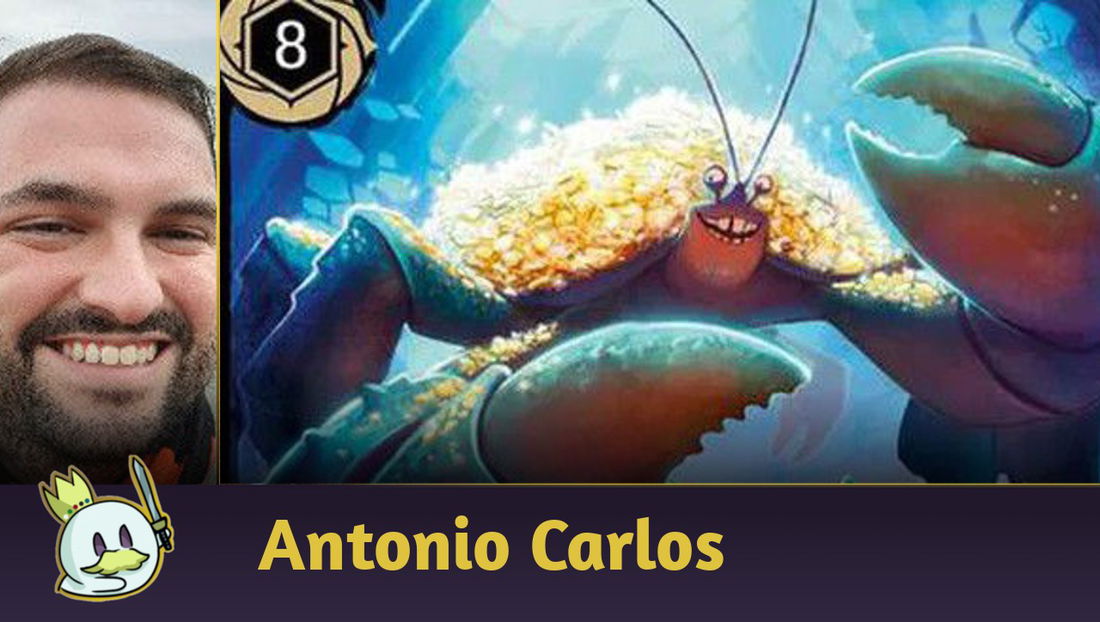Hello, everyone!
Following up on the analysis of decks for the Set Championships season of Shimmering Skies, today we're going to talk about a famous archetype in the game: Amber / Steel Songs!
The deck focuses on one of Lorcana's most unique mechanics, the namesake "Songs", and wants to take advantage of them to control the board and outvalue the opponent. It is not an “aggressive” deck, but once control of the game is established, it can quickly reach 20 Lore, especially because it prevents the opponent from disturbing its plans.
Ad
So let’s analyze Amber/Steel Songs, one of Lorcana’s best “midranges”!
Introducing the deck - strategy and gameplan
What does “midrange” mean?
The term “midrange” indicates a deck that is neither focused on winning the game in the first turns (which would be “aggros”), nor focused on a very long game (which would be “controls”). It's in a somewhat "middle ground", hence the name of the strategy. The objective is to counteract the opponent's initial moves and, little by little, use cards that generate value to take control of the game and then win.
In Lorcana there is a very unique card type: “Songs”. Normally, every card in the game has an ink cost to be used, and songs are no different. However, the Song mechanic allows you to, instead of paying the cost in ink, rest a character that has a cost equal to or greater than the song (as if the character was singing that Disney song!).
It may seem strange, because you "waste" a character's action to play a card from your hand, but the point is that you are doing something that impacts the game while also saving ink - i.e. still being able to do more plays in the same turn!
That's why Song decks tend to be efficient against aggressive decks, as they can fight “on equal terms”, but instead of playing 2+ characters per turn, they usually play one song AND one character. Furthermore, they use characters with the Singer ability, which allows you to play Songs that exceed the character's cost! And once control of the board is established with the Songs, the other characters in the deck are efficient in collecting Lore and thus paving the way to victory.
Now that we understand the strategy, let's analyze an example of a decklist and how each point we mentioned is present in it:
The "Singers"

These characters are the best way to expand the advantages granted by Songs, as they can “sing” above their ink cost. Ariel and Prince Naveen are able to sing any of the nineteen songs in the deck, while Cinderella can sing eleven of them (but makes up for it by being the only 1-cost, which means if you play it on turn 1, on turn 2 you can alreay sing a song that costs 3!).
The Songs

As mentioned before, the deck contains 19 songs in total. A reasonably high number, but necessary to ensure that Ariel will consistently find one in the top 5 of the deck. Of these 19, 12 serve as removals (boardcontrol), and are most important at the beginning of the game.
It is also worth remembering that most songs (14 of the 19) are NOT "inkable", so be especially careful when selecting your starting hand to ensure that you do not run out of resources - the deck needs to reach at least 5 ink to achieve its most powerful plays.
The "middle-weights"

Ad
Some characters help keep the board controlled through combat, if the opponent uses characters that go out of the songs' range. Pete also has the advantage of preventing your opponent's actions (including songs!), so it's crucial to save him for a key turn that will completely annul some sort of haymaker from the opponent (e.g. Be Prepared or You Have Forgotten Me), or to protect one of the heavy hitters from removal (e.g. Dragon Fire).
The "heavy-weights"

These two characters are the top of the deck's curve, but note that both can be played with a “discount” using the Shift ability, if you already have a character of the same name on the table - and the deck plays with 4 of each Cinderella and Robin Hood 1-drops in order to facilitate this line of play. In addition to having very strong abilities, being high-cost characters they also help in the mission of singing songs to put you even further ahead.
Card draw

Another strength of the deck is the ability to refill the hand and, with more songs coming from the top of the deck, use the characters on the board to immediately sing what was drawn.
A Whole New World deserves a highlight, despite it being a symmetrical effect, since you normally get much more advantage than your opponent by making plays first (you normally play the card as a Song, so after both players draw you still have all your ink available).
Rapunzel is another excellent option that not only draws cards but also heals a character and adds another threat to the table (and has a nice synergy with Lawrence - Jealous Manservant and Mr. Smee - Bumbling Mate, our “middle-weights”).
Analysis and turn strategy
Now that we understand how each card in the list works within the strategy, let's understand what the deck's game plan looks like:
Starting hand and turns 1-4: avoid high-cost cards that cannot turn into ink (especially A Whole New World), try to stick a "Singer" character (such as Cinderella and especially Ariel), and have 1-2 songs to control the board, and of course some ink to make your plays.
Middle game, turns 4-8: remove troublesome opposing characters and establish control of the board, ideally you should have 3-4 characters to the opponent's 0-1. Use songs to remove the strongest characters (or those that generate a lot of Lore) and start calculating how many turns it should take for you to reach 20 Lore.
Long game, turns 9+: if the opponent has creatures to fight back on the board, use A Whole New World to draw and, with the songs, try to eliminate new threats while continuing to acquire Lore to win. Keep cards like Pete and The Bare Necessities available if you need to prevent a strong opponent's action (e.g. Be Prepared).
Remember that the goal is not to win fast, but to ensure that your opponent cannot easily remove your best Lore generators. Once you have exhausted your opponent's resources, then you should “turn the switch” and start collecting Lore to win the match.
Ad
Conclusion
And so we come to the end of our analysis!
Amber/Steel Songs is a much beloved deck in Lorcana,since it encompasses a strategy that is unique for this TCG and is extremely fun for anyone who is a fan of Disney Songs. Furthermore, it is a strong deck that's been well established in the metagame since the first set.
Even though it's been constantly updated as new sets are released, the strategy in itself does not change - after all, Songs are one of the main ways to have an advantage in tempo/ink over your opponents. The deck is especially good at punishing fast opponents, because it has a lot of removal for small characters, without, however, losing steam against slower and controlling decks, such as Ruby / Sapphire.
So tell us, what did you think of the deck? Do you use different Songs in your decklist? Share it with us!
Lots of hugs and see you next time!









— commentaires0
Soyez le premier à commenter